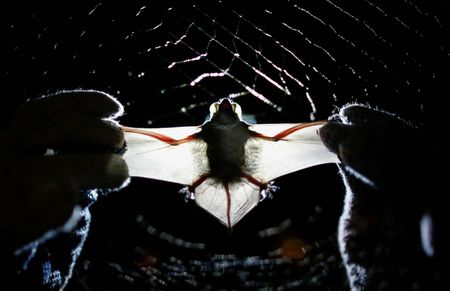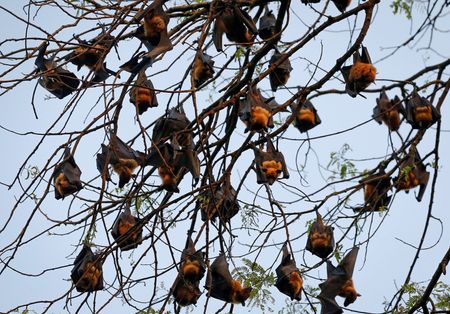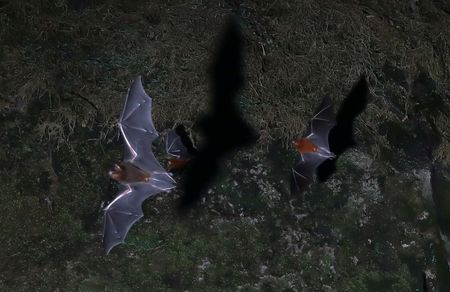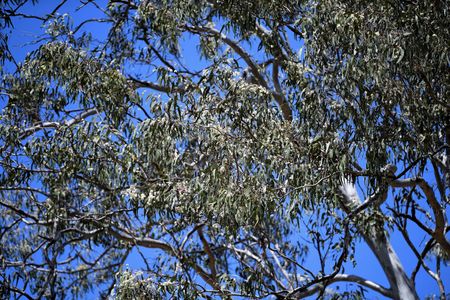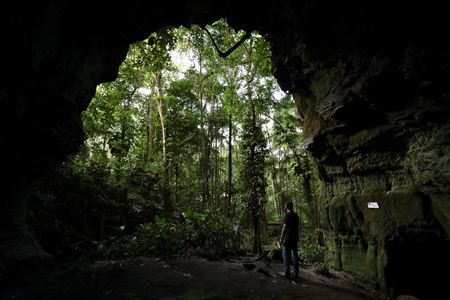By Ryan McNeill and Deborah J. Nelson
(Reuters) - For millennia, bat viruses lurked in forests across West Africa, India, South America and other parts of the world. But, undisturbed, they posed little threat to humanity.
No longer, a new Reuters data analysis found. Today, as more and more people encroach on bat habitat, bat-borne pathogens pose an epidemiological minefield in 113 countries, where risk is high that a virus will jump species and infect humans.
Bats are linked to many of the deadliest disease outbreaks that occurred during the past half century – including the COVID-19 pandemic, which has killed at least 7 million people and has its roots in a family of bat-borne coronaviruses. Though scientists are still trying to figure out how that virus came to infect humans, dozens of other outbreaks can be traced to human incursions into areas thick with bats.
To examine where the next pandemic may emerge, Reuters used two decades of disease-outbreak and environmental data to pinpoint the places on the planet most vulnerable to "zoonotic spillover" – the term for when a virus jumps between species. Viruses leap from bats to humans either by way of an intermediary host, such as a pig, chimpanzee or civet, or more directly through human contact with bat urine, feces, blood, or saliva.
Reuters reporters spoke to dozens of scientists, read extensive academic research and traveled to bat-rich countries across the globe to learn how human destruction of wild areas is amplifying pandemic risk. Our data analysis – the first ever of its kind – revealed a global economic system colliding with nature and putting people's health at risk, as bat-rich forests are cleared to make way for farms, mines, roads and other development.
Here are key takeaways from our examination:
* Reuters found more than 9 million sq km on Earth whereconditions in 2020 were ripe for a bat-borne virus to spillover, possibly sparking another pandemic. These areas, whichwe've dubbed "jump zones," span the globe, covering 6% ofEarth's land mass. They are mostly tropical locales rich in batsand undergoing rapid urbanization. * Nearly 1.8 billion people – more than one of every five ofus – lived in areas at high risk for spillover as of 2020.That's 57% more people living in jump zones than two decadesearlier, increasing the odds that a deadly bat virus could spillover. Moreover, those people are living closer together,intensifying the chances that a disease outbreak will developinto a fast-spreading global pandemic. * The Reuters analysis found high spillover risk in localesincluding China, where COVID-19 surfaced; neighboring Laos,where scientists have identified the closest relatives inwildlife to the virus responsible for the current pandemic;India, where half a billion people live in fast-expanding jumpzones, the most of any nation; and Brazil, which has the mostland at risk of any country, as humans ravage the Amazon. * The catalyst for outbreaks isn't bat behavior, scientistssay, but our own. Thirst for resources – iron ore, gold, cocoaand rubber, to name a few – is driving unchecked development ofwild areas and boosting the risk of global pandemics throughgreater contact with animals, scientists say. The world's jumpzones have lost 21% percent of their tree cover in almost twodecades' time, double the worldwide rate. * Pressure on once-remote woodlands gives viruses a chanceto spread and mutate as they leap among animal species, andeventually, into humans. The deadly Nipah virus in recentdecades spilled over from Asian fruit bats into pigs, and frompigs into people. Nipah more recently has proven able to infecthumans directly through contact with the bodily fluids of bats. * Humanity is destroying crucial habitats before scientistshave time to study them. Not only does development bring peopleinto closer contact with pathogens that could have pandemicpotential; it also eliminates secrets nature may hold that couldbe of value to science. For instance, bats' ability to live withmultiple viruses, without succumbing to many that may be deadlyfor other mammals, could yield important knowledge for thecreation of vaccines, medicines or other innovations. * Governments and corporations are doing little to assessrisk. In bat-rich Guinea, Sierra Leone, Liberia, Ivory Coast andGhana – where Reuters found pandemic risk to be among thehighest in the world – pending applications would double theterritory used for mining exploration and extraction, to a totalof 400,000 sq km, an area larger than Germany. Almost one-thirdof that expansion would be in existing jump zones, wherespillover risk is already high. Though those countries requiremining companies to assess potential environmental harms thatnew concessions might cause, none require companies to evaluatespillover risk.
(Editing by Janet Roberts, Paulo Prada and Feilding Cage)




